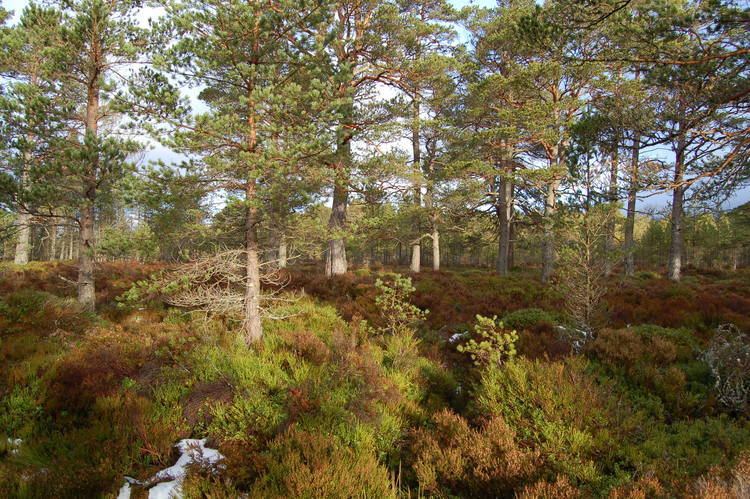 | ||
Similar Loch Garten, Caledonian Forest, Cairngorms, Rothiemurchus Forest, Loch Morlich | ||
Abernethy Forest is a remnant of the Caledonian Forest in Strathspey, in the Highland council area of Scotland. It is an RSPB reserve, close to Loch Garten Osprey Centre, which is also owned by the RSPB. There is approximately 4,000 hectares of forest within the reserve, and just under half of this is native caledonian pine forest. Abernethy Forest is the largest remaining remnant of the Ancient Caledonian Forest in Scotland.
Contents
- Map of Abernethy Forest United Kingdom
- Scottish Natural Heritage SNH Designated Areas
- Intervention
- References
Map of Abernethy Forest, United Kingdom
The forest is home to Scottish crossbill, red squirrel, wild cat, red deer, black grouse, crested tit, osprey and there is also a capercaillie lek.
Abernethy Forest is in the Cairngorms National Park. Nearby villages include Nethy Bridge to the north, Boat of Garten to the west, and Aviemore to the south-west.
Scottish Natural Heritage (SNH) Designated Areas
Abernethy Forest includes (in part or in whole) or bounded by several Scottish Natural Heritage designated areas, including the : Abernethy NNR, Abernethy Forest SSSI, Abernethy Forest SPA, Cairngorms SSSI, Cairngorms NNR, Cairngorms SAC, Cairngorms SPA, Cairngorms National Park, Cairngorms Massif SPA, Eastern Cairngorms SSI, Northern Corries, Cairngorms SSSI.
Intervention
The RSPB have a history of intervention on their reserve within the Abernethy Forest. On 19 October 2006, the RSPB began using explosives to blast off the crowns of nine Caledonian pine trees, between 100 and 200 years old. Referring to this use of explosives, Desmond Dugan, RSPB Site Manager at the Forest Lodge said:
"Explosives may seem extreme but the effect will be no less catastrophic than a wind snapped, lightning struck or avalanched tree"
James Reynolds, RSPB Head of Media and Communications said:
"We've been simply felling trees and trying to create dead wood habitats in that way before, but we don't think it allowed the process to get going quickly enough"
On 24 August 2011 the RSPB received consent from the Forestry Commission to expand native woodland through natural regeneration and planting.
Since they received consent from the Forestry Commission, the RSPB began planting 60,000 aspen, birch, juniper and willow trees within the approximately 590 hectares of their Plantation.
